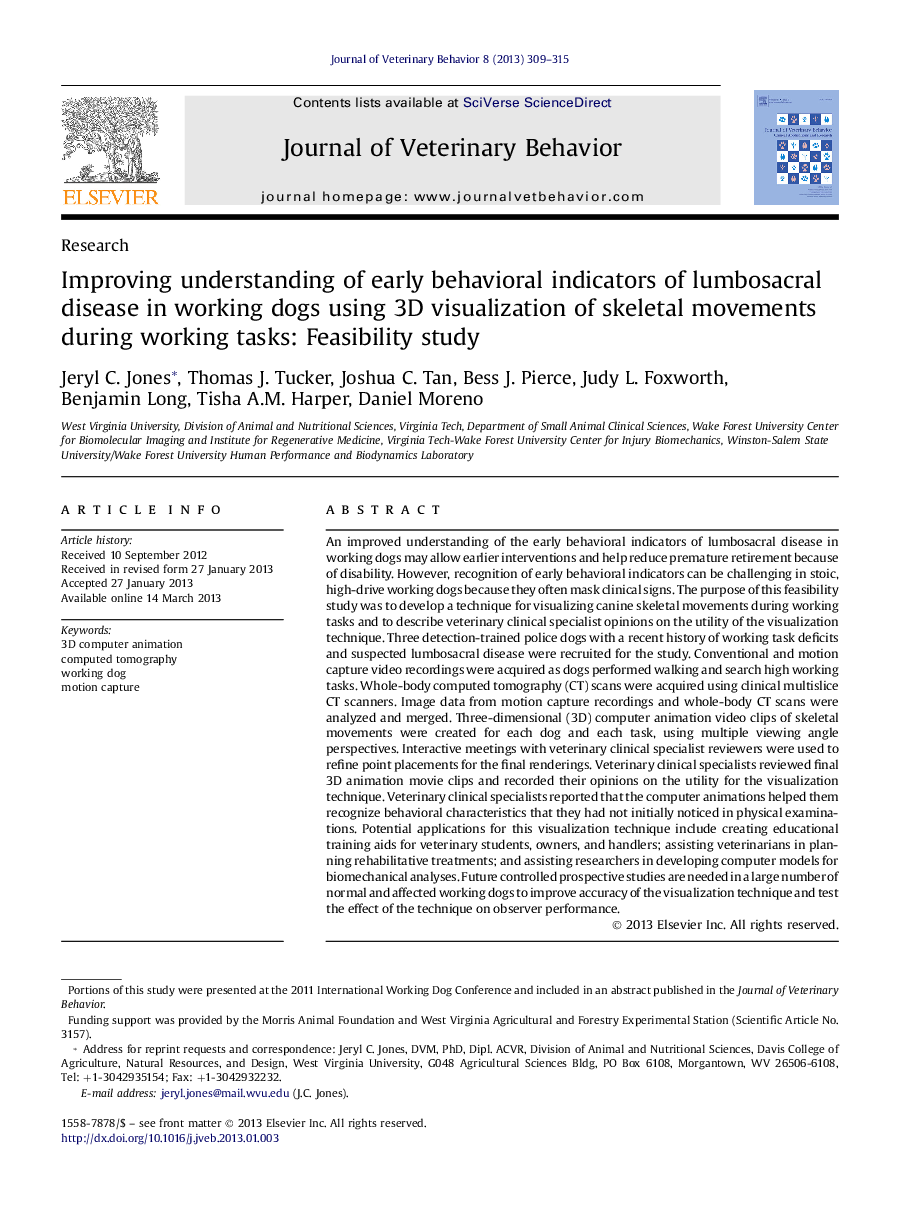| کد مقاله | کد نشریه | سال انتشار | مقاله انگلیسی | نسخه تمام متن |
|---|---|---|---|---|
| 2399256 | 1102037 | 2013 | 7 صفحه PDF | دانلود رایگان |

An improved understanding of the early behavioral indicators of lumbosacral disease in working dogs may allow earlier interventions and help reduce premature retirement because of disability. However, recognition of early behavioral indicators can be challenging in stoic, high-drive working dogs because they often mask clinical signs. The purpose of this feasibility study was to develop a technique for visualizing canine skeletal movements during working tasks and to describe veterinary clinical specialist opinions on the utility of the visualization technique. Three detection-trained police dogs with a recent history of working task deficits and suspected lumbosacral disease were recruited for the study. Conventional and motion capture video recordings were acquired as dogs performed walking and search high working tasks. Whole-body computed tomography (CT) scans were acquired using clinical multislice CT scanners. Image data from motion capture recordings and whole-body CT scans were analyzed and merged. Three-dimensional (3D) computer animation video clips of skeletal movements were created for each dog and each task, using multiple viewing angle perspectives. Interactive meetings with veterinary clinical specialist reviewers were used to refine point placements for the final renderings. Veterinary clinical specialists reviewed final 3D animation movie clips and recorded their opinions on the utility for the visualization technique. Veterinary clinical specialists reported that the computer animations helped them recognize behavioral characteristics that they had not initially noticed in physical examinations. Potential applications for this visualization technique include creating educational training aids for veterinary students, owners, and handlers; assisting veterinarians in planning rehabilitative treatments; and assisting researchers in developing computer models for biomechanical analyses. Future controlled prospective studies are needed in a large number of normal and affected working dogs to improve accuracy of the visualization technique and test the effect of the technique on observer performance.
Journal: Journal of Veterinary Behavior: Clinical Applications and Research - Volume 8, Issue 5, September–October 2013, Pages 309–315